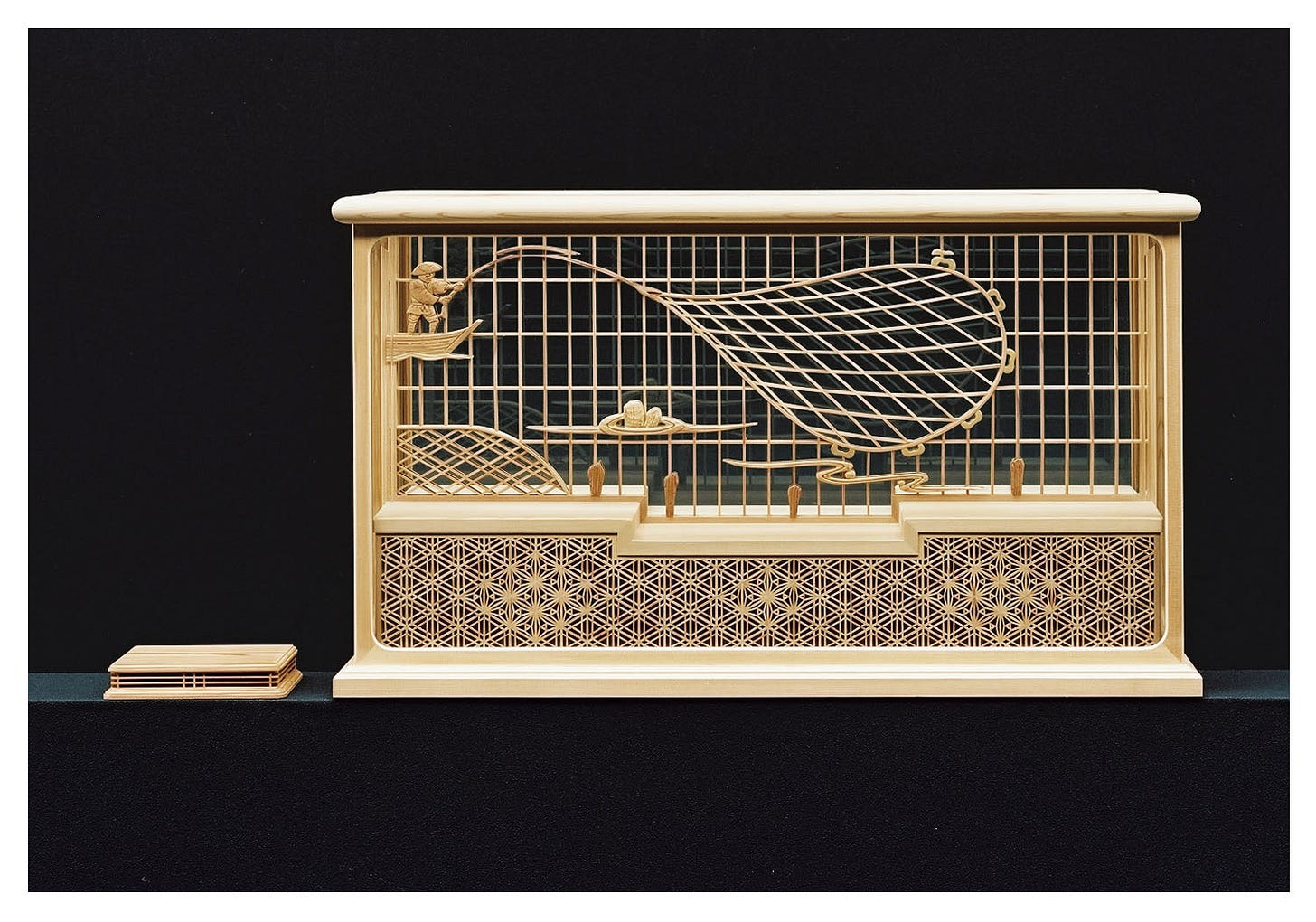KUMIKO technique is said to have been introduced as an architectural technique for shrines and temples about 1400 years ago when Buddhism was introduced through China. KUMIKO was used as an interior decoration for the aristocratic mansion already 1000 years ago. In Edo period (1603-1868), this technology was improved a lot, and more than 200 kinds of KUMIKO patterns with plant motifs were created.
KUMIKO craftsmen existed all over Japan and they were making their own KUMIKO with each region's name. However, after the Meiji Restoration, westernization by the modern nation progressed and the demand for traditional Japanese houses gradually decreased. After World War II, the demand for apartment buildings increased during the high-growth economic era and the opportunities to build new traditional Japanese houses decreased more and more. As a result of this trend of the times, both joinery craftsmen and KUMIKO craftsmen who can perform delicate art works have been disappearing, and it has become very difficult to pass on the techniques onto the next generation.
This crisis of inheritance of traditional Japanese crafts has become very serious not only in KUMIKO but also in many fields. Through EnArtEx activities, we would like to introduce and support modern craftsmen who are passionate about inheriting their cultural craft and develop a fan base to purchase their works and support this inheritance. If you are interested in visiting such a master, we would like to support your visits and tours. Currently, the fields of craftsmanship we are involved in are Japanese swords, Yame tea, Takatori ware, Nabeshima Dantsu, Kumiko and Kurume kasuri. Except for Japanese swords, all other craftsmen are living in the Kyushu area.
Feel free to contact us if you are interested in supporting them through such purchases, events, visits, etc.
#kumiko #Kyushu #japaneseart #japaneseculture #crafts #craftsman #artisan #heritage





